
Pope John Paul II was head of the Catholic Church and sovereign of the Vatican City State from 1978 until his death in 2005.

Sacrifice is the offering of material possessions or the lives of animals or humans to a deity as an act of propitiation or worship. Evidence of ritual animal sacrifice has been seen at least since ancient Hebrews and Greeks, and possibly existed before that. Evidence of ritual human sacrifice can also be found back to at least pre-Columbian civilizations of Mesoamerica as well as in European civilizations. Varieties of ritual non-human sacrifices are practiced by numerous religions today.
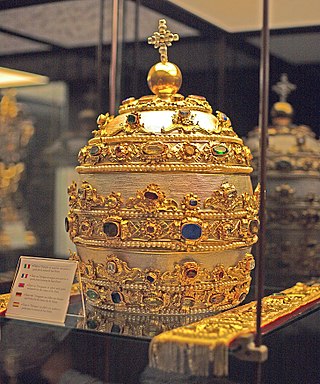
The papal tiara is a crown that is worn by popes of the Catholic Church from as early as the 8th century to the mid–20th century. It was last used by Pope Paul VI in 1963, and only at the beginning of his reign.

A papal coronation is the formal ceremony of the placing of the papal tiara on a newly elected pope. The first recorded papal coronation was of Pope Nicholas I in 858. The most recent was the 1963 coronation of Paul VI, who soon afterwards abandoned the practice of wearing the tiara. To date, none of his successors have used the tiara, and their papal inauguration celebrations have included no coronation ceremony, although any future pope may elect to restore the use of the tiara at any point during his pontificate.

The Palmarian Church, officially registered as the Palmarian Christian Church and also known as the Palmarian Catholic Church, is a Christian church with an episcopal see in El Palmar de Troya, Andalusia, Spain. The Palmarian Church claims to be the exclusive One, Holy, Catholic and Apostolic Church founded by Jesus Christ. It claims that the Holy See, the institution of the Papacy and the headquarters of the Catholic Church was moved to El Palmar de Troya at the Cathedral-Basilica of Our Crowned Mother of Palmar, under the auspices of the Patriarchate of El Palmar de Troya, in 1978, due to the apostasy of the Roman Catholic Church from the Catholic faith.

The Apostolic Penitentiary, formerly called the Supreme Tribunal of the Apostolic Penitentiary, is a dicastery of the Roman Curia and is one of the three ordinary tribunals of the Apostolic See. The Apostolic Penitentiary is chiefly a tribunal of mercy, responsible for issues relating to the forgiveness of sins in the Catholic Church.

Catholic Mariology is Mariology in Catholic theology. According to the Immaculate Conception taught by the Catholic Church, she was conceived and born without sin, hence Mary is seen as having a singular dignity above the saints, receiving a higher level of veneration than all angelic spirits and blessed souls in heaven. Catholic Mariology thus studies not only her life but also the veneration of her in daily life, prayer, hymns, art, music, and architecture in modern and ancient Christianity throughout the ages.

Our Lady of Aparecida, is a title of the Blessed Virgin Mary associated with the Immaculate Conception.
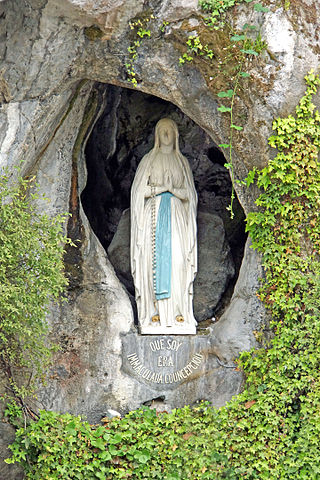
Our Lady of Lourdes is a title of the Virgin Mary. She is venerated under this title by the Roman Catholic Church due to her apparitions that occurred in Lourdes, France. The first apparition of 11 February 1858, of which Bernadette Soubirous told her mother that a "Lady" spoke to her in the cave of Massabielle while she was gathering firewood with her sister and a friend. Similar apparitions of the "Lady" were reported on 18 occasions that year, until the climax revelation in which she introduced herself as: "I am the Immaculate Conception". On 18 January 1862, the local Bishop of Tarbes Bertrand-Sévère Laurence endorsed the veneration of the Blessed Virgin Mary in Lourdes.
Redemptive suffering is the Christian belief that human suffering, when accepted and offered up in union with the Passion of Jesus, can remit the just punishment for one's sins or for the sins of another, or for the other physical or spiritual needs of oneself or another. In Christianity, it is a tenet of Catholic theology, although it is taught in Reformed doctrine as well.

A canonical coronation is a pious institutional act of the pope, duly expressed in a formal decree of a papal bull, in which the pope bestows the pontifical right to impose an ornamental crown, a diadem or an aureole to an image of Christ, Mary or Joseph that is widely venerated in a particular diocese or locality.
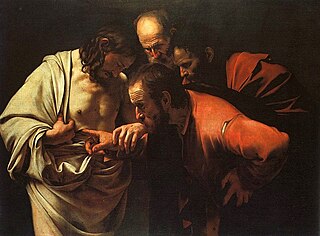
A number of people have claimed to have had visions of Jesus Christ and personal conversations with him. Some people make similar claims regarding his mother, Mary. Discussions about the authenticity of these visions have often invited controversy. The Catholic Church endorses a fraction of these claims, and various visionaries it accepts have achieved beatification, or even sainthood.

The Mariology of the popes is the theological study of the influence that the popes have had on the development, formulation and transformation of the Roman Catholic Church's doctrines and devotions relating to the Blessed Virgin Mary.

The Holy See and the State of Palestine established formal diplomatic relations in 2015, through the mutual signing of the Comprehensive Agreement between the Holy See and the State of Palestine. In 2017, a Palestinian embassy to the Holy See was opened.

The Pope John Paul II bibliography contains a list of works by Pope John Paul II, and works about his life and theology.
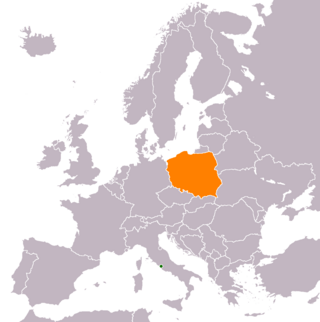
Holy See–Poland relations are foreign relations between the Holy See and the Republic of Poland. As of 2015, approximately 92.9 percent of Poles belong to the Catholic Church.
Dolentium hominum is a Latin motu propium from John Paul II, dated 11 February 1985. It gave papal permission to erect the Pontifical Council for the Pastoral Care of Health Care Workers.
Salvifici doloris is a February 1984 Apostolic letter by Pope John Paul II. Its theme was suffering in general in the light of the cross and salvific or redemptive suffering in particular. It was issued in connection with the 1983 Holy Jubilee Year of Redemption.
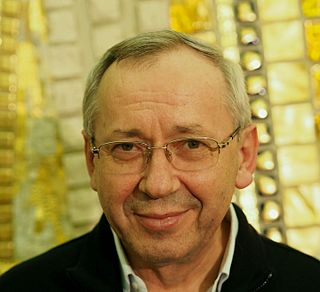
Marko Ivan Rupnik is a Slovenian Catholic priest, theologian, mosaic artist, and former Jesuit. Among the churches he has decorated around the world are the Saint John Paul II National Shrine in Washington D.C., the Redemptoris Mater Chapel in the Vatican's Apostolic Palace, the Sanctuary of Our Lady of Lourdes, the Sanctuary of Fátima, the Sanctuary of Saint Pio of Pietrelcina, the Almudena Cathedral in Madrid. He was the director of Centro Aletti in Rome and was a theological student of Tomáš Špidlík.

















